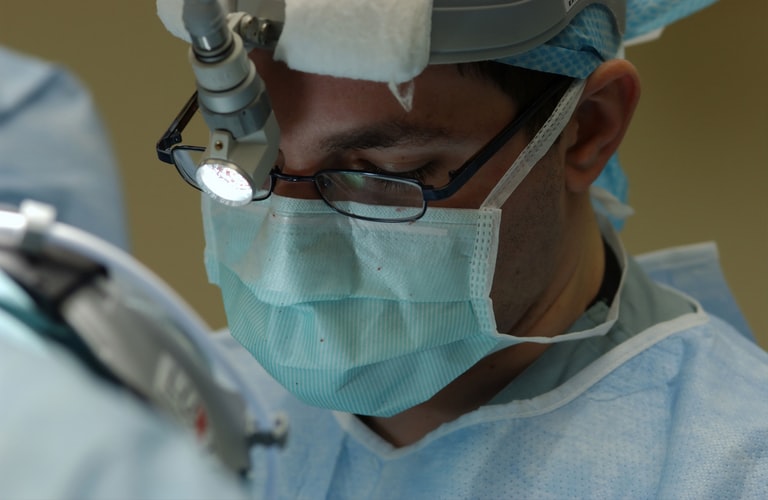Health
COMMONLY ASKED QUESTIONS ABOUT LASIK EYE SURGERY
Published
5 years agoon

More than 54% of Australians have eye health conditions that are long-term. With over half the population wearing glasses, it is essential to consider alternative options that do not require wearing glasses all the time. Thanks to the development of technology and in the field of ophthalmology. LASIK surgery is a revolutionary procedure to fix your eye problems.
- How will I know if I’m eligible for Lasik Eye Surgery?
The good thing about LASIK eye surgery is that it is inclusive. The majority of adults are considered eligible for this procedure. Before you go for the surgery, you have to undergo a thorough medical examination by your doctor.
During the appointment, the doctor evaluates your cornea’s shape, thickness and pupil size. They examine your eyes for hyperopia, myopia, astigmatism, etc. If your eyes are moist during the examination, the doctor might also recommend a treatment to prevent dry eyes after the surgery.
- What are the necessities of this surgery’s candidate?
- They should be 18 years of age or above to undergo this surgery.
- They should not have an autoimmune disease.
- They should not be pregnant or breastfeeding as the hormone levels change during this period. It is better to wait till they return to normal levels.
- They should have healthy eyes. It is not advisable for people with chronic dry eyes, cataracts, or glaucoma.
- Is it Painful?
Fortunately, this procedure is not painful. Before the surgery begins, the surgeon places the eye drops into your eyes, which numbs them. However, you might feel a little pressure, but you will not experience any pain or discomfort.
The surgeon sometimes provides valium to help you relax. After the procedure, your eyes might experience a light itch or burning sensation, but it will go away soon.
- How is a LASIK eye surgery carried out?
The goal of LASIK eye surgery is to alter the shape of your cornea. It helps to focus images better on the retina. This change allows you to see more clearly. Doctors achieve this by employing two lasers.
- What can you expect on the day of the surgery?
- The doctor will test your eyes to ensure your eye health history is accurate and updated.
- They use the anesthetic eye drops in both of your eyes. The surgeon will also give you a sedative.
- A femtosecond laser helps create a “flap” in your cornea. The surgeon folds the flap to allow access to the stroma (underlying cornea).
- The surgeon then removes small amounts of tissue from your cornea to reshape it using a laser that projects ultraviolet beams. This alteration helps accurately focus light on the retina to improve vision.
- If you have nearsightedness, the laser is employed to flatten the cornea. If you have farsightedness, your cornea will be made steeper with the use of the laser.
- The flap is put back in its position to cover the site of surgery and to aid in healing.
Conclusion
It is a safe procedure that has been approved by the Australian Government of Health. The side effects are minimal, and you can resume your life soon after the surgery, although driving the same day is not recommended. You will have to go to your ophthalmologist for a few more post-op examinations. This step is to ensure that your eyes are healing well and that there are no complications.
More than 54% of Australians have eye health conditions that are long-term. With over half the population wearing glasses, it is essential to consider alternative options that do not require wearing glasses all the time. Thanks to the development of technology and in the field of ophthalmology. LASIK surgery is a revolutionary procedure to fix your eye problems.
- How do I know if I’m eligible for Lasik Eye Surgery?
The good thing about LASIK eye surgery is that it is inclusive. The majority of adults are considered eligible for this procedure. Before you go for the surgery, you have to undergo a thorough medical examination by your doctor.
During the appointment, the doctor evaluates your cornea’s shape, thickness and pupil size. They examine your eyes for hyperopia, myopia, astigmatism, etc. If your eyes are moist during the examination, the doctor might also recommend a treatment to prevent dry eyes after the surgery.
- What are the necessities of this surgery’s candidate?
- They should be 18 years of age or above to undergo this surgery.
- They should not have an autoimmune disease.
- They should not be pregnant or breastfeeding as the hormone levels change during this period. It is better to wait till they return to normal levels.
- They should have healthy eyes. It is not advisable for people with chronic dry eyes, cataracts, or glaucoma.
- Is it Painful?
Fortunately, this procedure is not painful. Before the surgery begins, the surgeon places the eye drops into your eyes, which numbs them. However, you might feel a little pressure, but you will not experience any pain or discomfort.
The surgeon sometimes provides valium to help you relax. After the procedure, your eyes might experience a light itch or burning sensation, but it will go away soon.
- How is a LASIK eye surgery carried out?
The primary goal of LASIK eye surgery is to alter the shape of your cornea. It helps to focus images better on the retina. This change allows you to see more clearly. Doctors achieve this by employing two lasers
- What can you expect on the day of the surgery?
- The doctor will test your eyes to ensure your eye health history is accurate and updated.
- They use the anesthetic eye drops in both of your eyes. The surgeon will also give you a sedative.
- A femtosecond laser helps create a “flap” in your cornea. The surgeon folds the flap to allow access to the stroma (underlying cornea).
- The surgeon then removes small amounts of tissue from your cornea to reshape it using a laser that projects ultraviolet beams. This alteration helps accurately focus light on the retina to improve vision.
- If you have nearsightedness, the laser is employed to flatten the cornea. If you have farsightedness, your cornea will be made steeper with the use of the laser.
- The flap is put back in its position to cover the site of surgery and to aid in healing.
Conclusion
It is a safe procedure approved by the Australian Government of Health. The side effects are minimal, and you can resume your life soon after the surgery, although driving the same day is not recommended. You will have to go to your ophthalmologist for a few more post-op examinations. This step is to ensure that your eyes are healing well and that there are no complications.
Mudassar Hassan brings 8 years of experience in helping grass roots, mid-sized organizations and large institutions strengthen their management and resource generating capacities and effectively plan for the future. He is also a mentor and professional advisor to artists working in all disciplines. He is also the gold medalist from Abbottabad University of Science and Technology in the Bachelors of Sciences of Computer Science and recently Graduated from the University of Bolton with Masters in International Management.

You may like

Is Fmovies Safe? What You Need to Know Before Streaming

Dominating the Digital Pitch: A Step-by-Step Guide to Creating Futbol Libre Content

Conquering CricHD: A Comprehensive Guide to Cricket Streaming

What You Need to Know About Police Brutality?

12 Sites to Watch Free Online TV Shows with Complete Episodes in 2024

